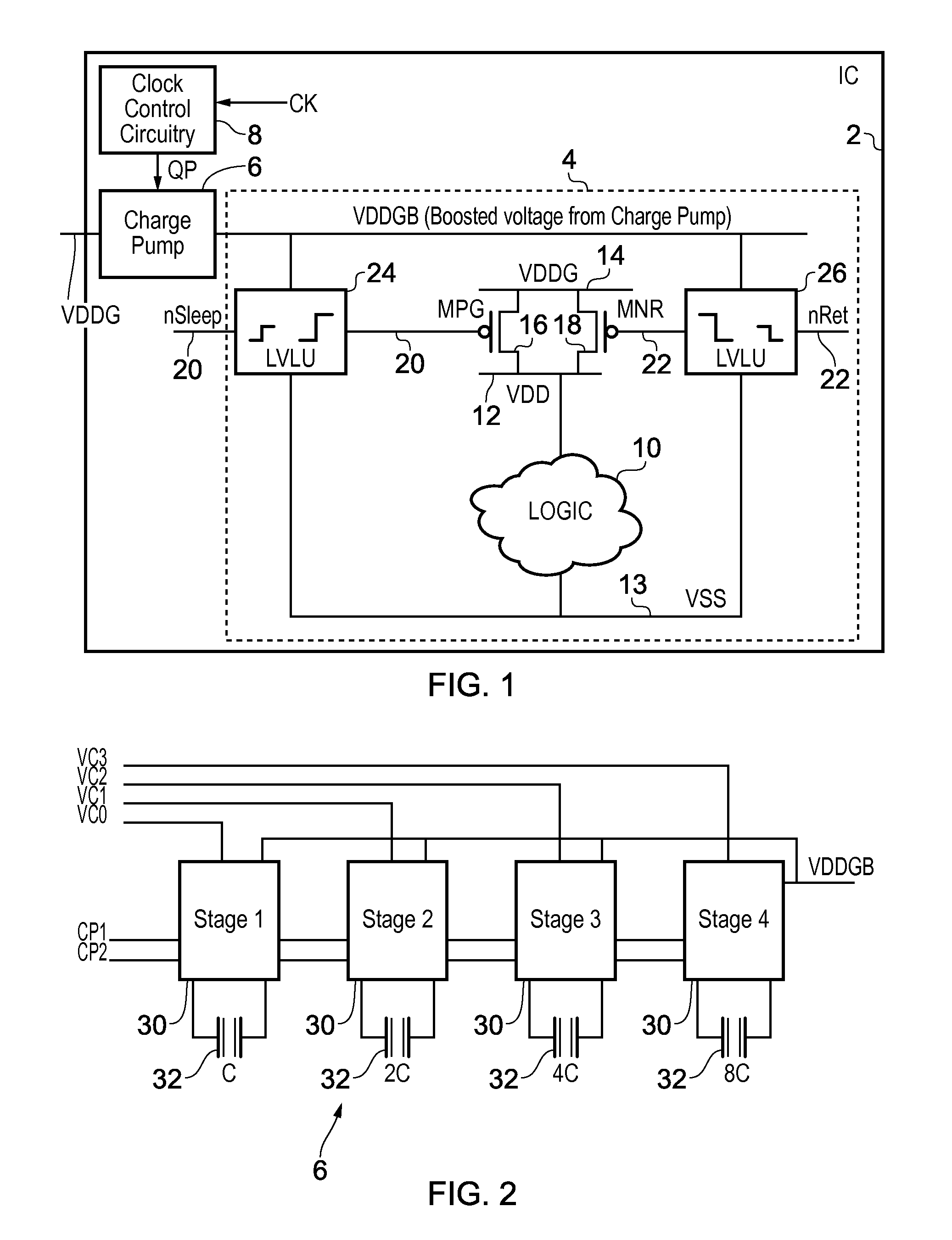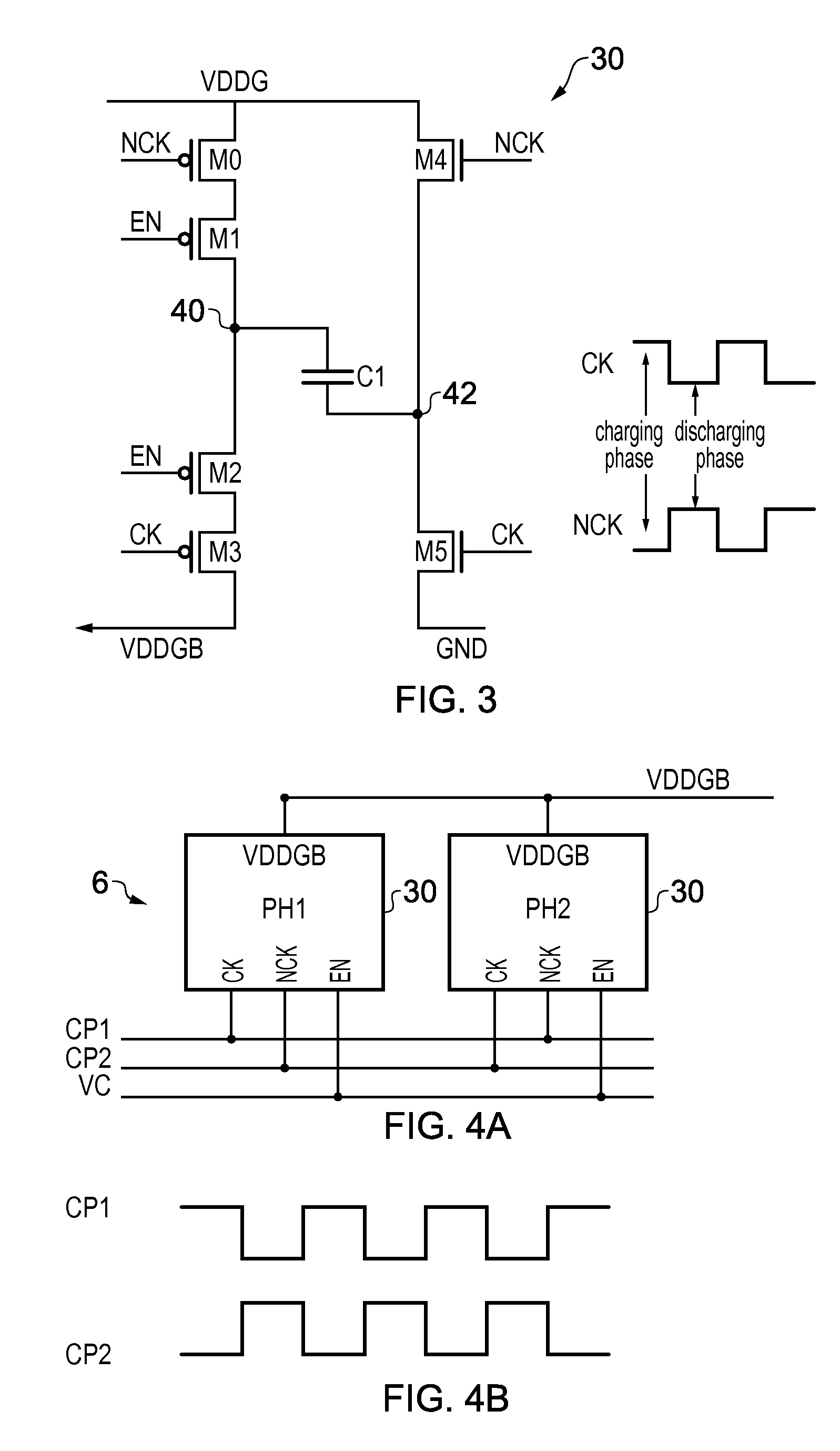Controlling voltage generation and voltage comparison
a voltage generation and voltage technology, applied in logic circuits, efficient power electronics conversion, instruments, etc., can solve the problem of power consumption of voltage generating circuitry, achieve the effect of reducing the power consumed by the integrated circuit, significantly eased implementation, and suppressing clock pulse transmission
- Summary
- Abstract
- Description
- Claims
- Application Information
AI Technical Summary
Benefits of technology
Problems solved by technology
Method used
Image
Examples
Embodiment Construction
[0070]FIG. 1 schematically illustrates an integrated circuit 2 comprising a circuit block 4, voltage generating circuitry 6, and clock control circuitry 8. In this example, the voltage generating circuitry 6 comprises a charge pump, although other forms of voltage generating circuitry could also be used. The integrated circuit 2 is supplied with a supply voltage VDDG. The charge pump 6 converts the supply voltage to a boosted on-chip voltage VDDGB which is supplied to the circuit block 4. The clock control circuitry 8 receives an input clock signal CK and controls transmission of a voltage generation clock signal QP to the charge pump 6. The clock control circuitry 8 selectively prevents or allows clock pulses of the input clock signal CK to be transmitted to the charge pump 6 as clock pulses of the voltage generation clock signal QP.
[0071]The circuit block 4 comprises processing logic 10 which is coupled between a virtual supply power rail 12 (VDD) and a ground power rail 13 (VSS)....
PUM
 Login to View More
Login to View More Abstract
Description
Claims
Application Information
 Login to View More
Login to View More - R&D
- Intellectual Property
- Life Sciences
- Materials
- Tech Scout
- Unparalleled Data Quality
- Higher Quality Content
- 60% Fewer Hallucinations
Browse by: Latest US Patents, China's latest patents, Technical Efficacy Thesaurus, Application Domain, Technology Topic, Popular Technical Reports.
© 2025 PatSnap. All rights reserved.Legal|Privacy policy|Modern Slavery Act Transparency Statement|Sitemap|About US| Contact US: help@patsnap.com



